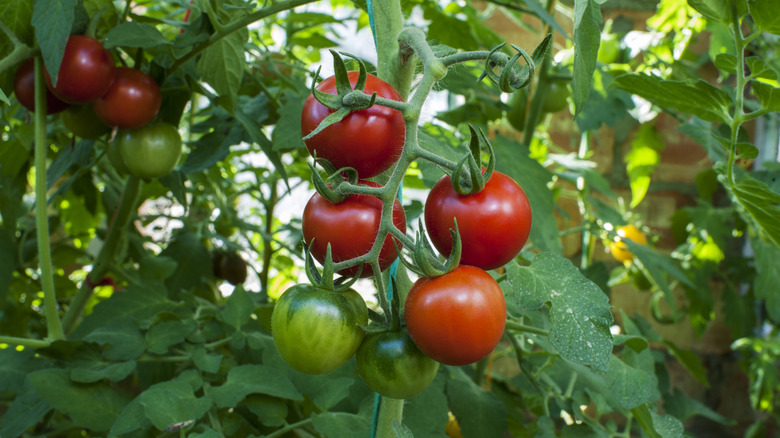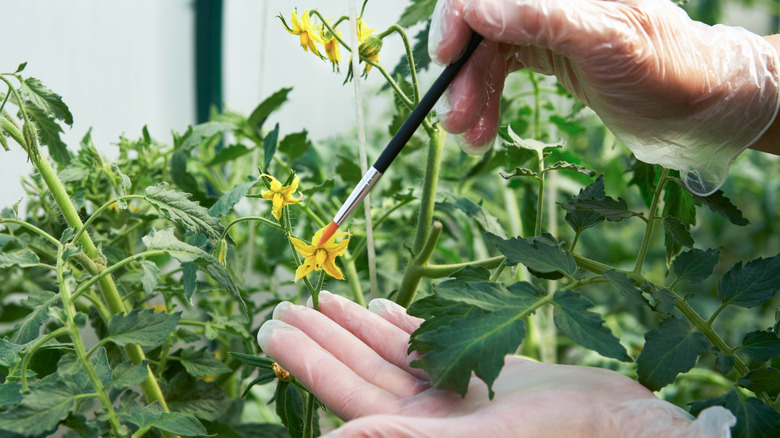Unlock Extra Tomatoes With This Simple Tomato Tickle Trick
Growing juicy ripe tomatoes is an absolute summer highlight for many gardeners. When you first bite into a homegrown, vine-ripened fruit, your taste buds will come alive with that amazing flavor that a store-bought variety just can't replicate. Although there's plenty of helpful advice on the best way to grow these garden favorites, you may not have heard of the simple "tomato tickle" trick that will give you loads of extra fruit come harvest time. The tomato tickle is a trick you definitely what you want to use if you're seeing lots of flowers, but are wondering why your tomato plants aren't producing fruit despite getting plenty of sunlight and water.
Tomatoes are self-pollinating, which means that every flower has both male and female parts. The pollen gets from one flower to another — or from the male stamen down into the female stigma — either through wind, or from insects such as bees visiting the flowers on your plants. When the female part of each flower receives enough pollen, fruit production begins. But, if your plants don't get any wind movement or aren't being visited by pollinator insects, some blooms may not get pollinated and the result is that you get no fruit. The tomato tickle trick involves a form of artificial pollination, which helps move that pollen around so that most of your flowers produce many scrumptious fruits. In the most recent relevant study, which, believe it or not, dates back to 1919, the Oregon Agricultural College found that artificially pollinated tomato plants yielded over 60% more fruit than their unpollinated counterparts.
What does it mean to tickle your tomatoes?
When your plants are producing lots of flowers but very little fruit, you want to give them a bit of a helping hand by gently shaking the stems just behind the blooms to disperse the pollen. For even more precise pollination, you can use a small, soft paintbrush and "tickle" the inside of each flower. As you move from flower to flower while doing this, you'll also be effectively spreading pollen between the blooms and the male and female parts. Greenhouse growers commonly use something like an electric toothbrush or a commercial vibration device to vibrate the flowers, so that the pollen moves down into the ovary of the flower. The best time of day to "tickle" your tomato plants is early in the morning, before the sun becomes excessively hot.
This trick is particularly useful if you don't have a backyard and are growing the tomatoes indoors or in a greenhouse, where there's little air movement to facilitate pollination. You may also want to tickle the tomatoes if you use a crop cover to deter birds and other wildlife. Now that you know that tickling your tomatoes is a worthwhile trick, give it a try, and you might be surprised at how productive your plants can be. And, to take your harvest to the next level, you might be interested in a few other handy tomato-growing hacks.

